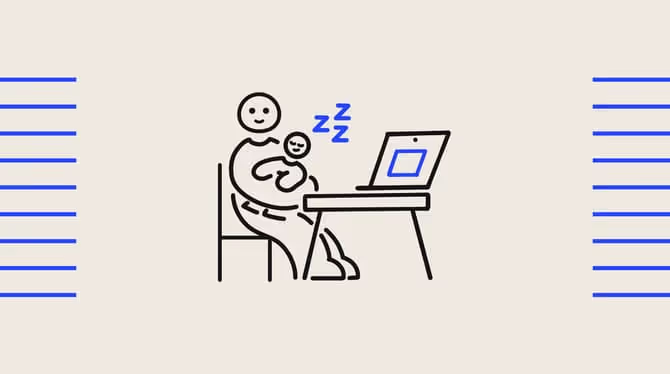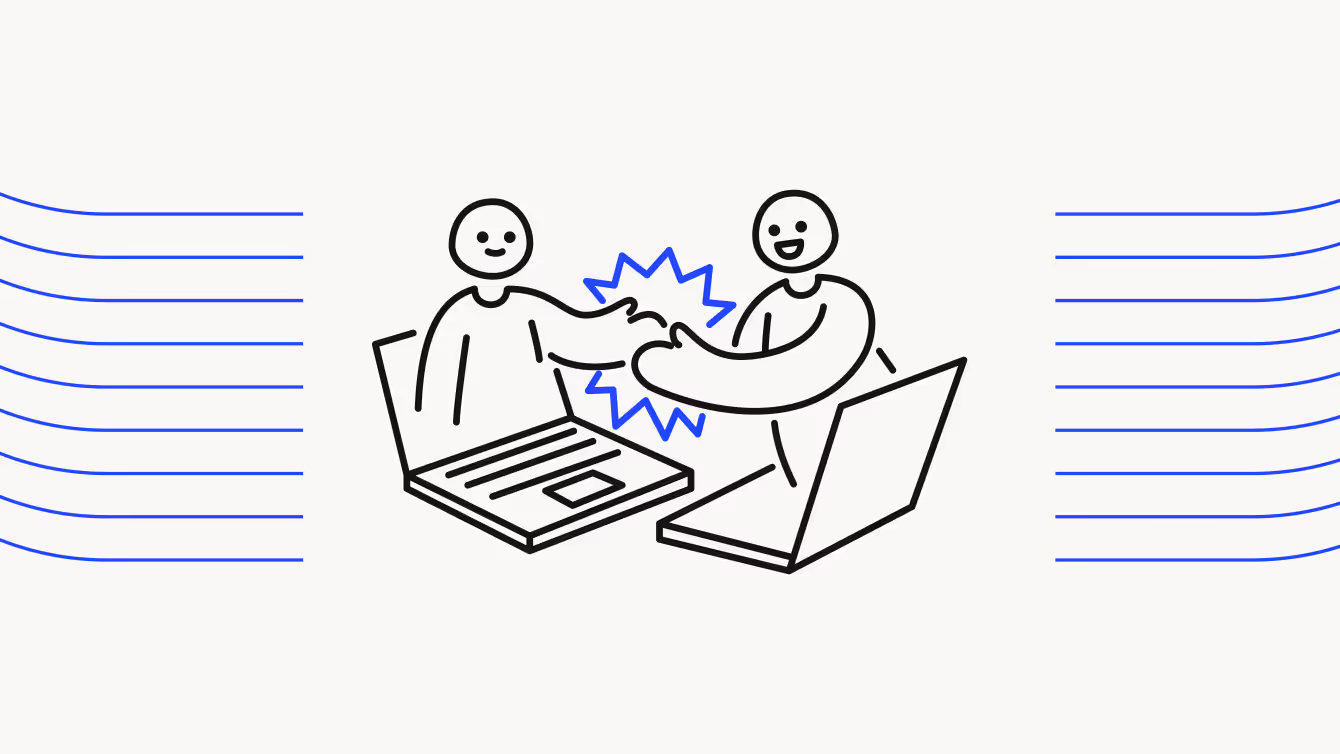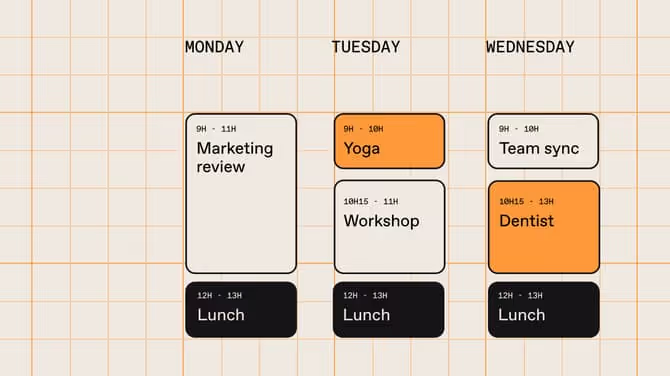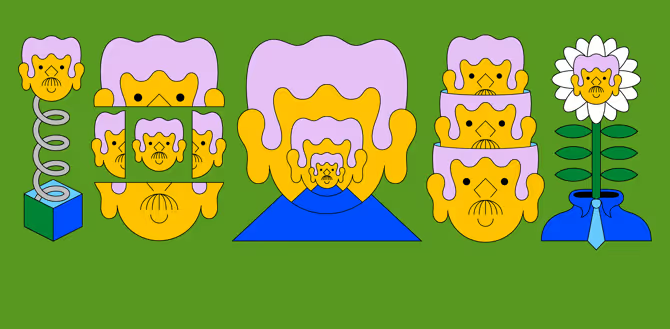How to improve hybrid work culture: A guide for HR leaders
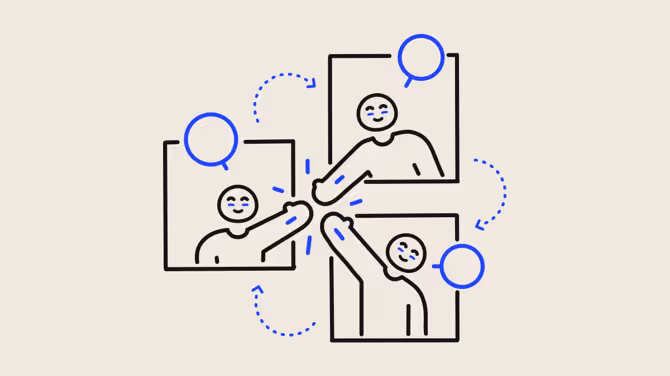
Discover Workleap Officevibe's benchmark report on 12 key employee engagement metrics

Hybrid work is no longer just a trend — it's the new norm. But that doesn’t mean it's not without its challenges, and maintaining a strong company culture in such an environment is one of them.
HR experts have their employees’ well-being at the forefront of their responsibilities. How do they ensure remote employees feel just as included and valued as those in the office? How can they foster a cohesive, engaged, and productive team when people aren’t in the same physical space?
If you’re asking yourself those same questions, look no further! This article covers the practical strategies to help you create a thriving hybrid work culture in your own organization.
Too good to be true? The challenges of hybrid work
Unless the world plans to return to the Middle Ages, the hybrid work model is here to stay. And there are plenty of good reasons for that! Flexibility, improved work-life balance, and access to a broader talent pool are just a few of the advantages that hybrid work offers.
Still, it’s not without its hurdles. According to a study by Buffer, even if nearly 97% of remote workers expressed their desire to continue working remotely some of the time, many feel disconnected from their teams.
The disconnect hybrid teams feel can lead to communication breakdowns and feelings of isolation. It can cause uneven access to resources, like in-office perks, information sharing, or mentorship opportunities that leave remote employees at a disadvantage.
{emphasize}
Breaking down common issues faced by hybrid teams
Understanding the common pain points of hybrid workers is the first step to creating a more connected and productive workplace. So, what kind of challenges are we talking about here?
- Communication barriers: When your team is split between the office and home, communication can take a hit. Remote employees might feel left out of the loop, especially when they miss those spontaneous office chats that build camaraderie.
- Unequal access to resources: Not everyone has the same setup at home as they do in the office. A remote worker might be stuck with slower internet or outdated tools, which can put them at a disadvantage compared to their in-office colleagues who have direct access to IT support.
- Fragmented culture: A split work environment can sometimes create an "us versus them" vibe. Remote employees might feel like they're on the outside looking in, especially when they miss out on team events or informal gatherings, leading to a sense of disconnection.
- Lower engagement and productivity: When remote workers start to feel isolated, it can take a toll on their motivation. This lack of engagement can lead to lower productivity, with potential ripple effects like missed deadlines or reduced overall morale.
Whether it's communication hiccups or feeling out of the loop, these issues can strain team dynamics. But, by being proactive, you can keep your team engaged, supported, and thriving — no matter where they’re working from.
{emphasize}
Impact of a fragmented culture on engagement and productivity
When a hybrid work culture starts to splinter, the effects are real and noticeable. Employees who feel cut off from their team are less likely to be engaged. And, as we’ve seen before, the relationship between employee engagement and productivity is strong.
But a drop in engagement caused by disconnection doesn’t just slow down individual productivity — it can also affect the morale of the entire team. Even the ones in the office. Over time, this can lead to higher turnover rates because employees eventually seek out workplaces where they feel more included and appreciated.
The trick is to build an environment where everyone feels like they belong, whether they’re working from home or the office. This means HR leaders and managers must make a conscious effort to close the gap between remote and in-office workers, ensuring everyone has the same access to resources and opportunities. If not addressed, these issues can cause major problems company-wide.
So, how do you keep everything running smoothly in a hybrid setup?
Hybrid? No problem. Communication and collaboration are the keys.
Imagine providing your employees with an instruction manual, but where one-half of the team reads only the left-hand side of pages and the other half reads only the right side. It’s not going to go well. But that’s exactly what poor communication in a hybrid team feels like.
And look — we’re not exaggerating. According to Gartner, 70% of hybrid teams struggle with communication, which often leads to things like project delays and job dissatisfaction.
This might sound simple, but fostering good communication and collaboration dynamics is the secret to creating a great hybrid work culture (and ensuring it sticks). To keep your team aligned, it’s essential to set up clear communication channels and practices that connect remote and in-office employees seamlessly.
Creating leadership best practices for hybrid teams
Leading a hybrid team effectively requires a fresh set of strategies that prioritize connection, clarity, and community.
Share these tips with your managers to encourage them to rise to the occasion:
- Overcommunicate (but don’t overwhelm): In a hybrid setup, it’s easy for remote workers to feel out of the loop. Regular communication helps bridge that gap.
{highlight}Use a mix of communication channels — email, instant messaging, and video calls — to keep everyone informed. Send out weekly updates summarizing key projects and priorities and ensure they reach both remote and in-office team members. {highlight}
- Set clear expectations: Ambiguity can lead to misunderstandings and frustration, especially when team members are scattered.
{highlight}Clearly outline tasks, deadlines, and the preferred methods of communication. Create a shared document that details team norms, like response times for messages or guidelines for virtual meetings.{highlight}
- Foster inclusivity: Remote employees often miss out on impromptu office discussions and social events, which can make them feel excluded.
{highlight}Make inclusivity a priority by scheduling regular virtual social events, like team lunches or coffee breaks. During meetings, ensure that remote workers have equal opportunities to contribute by actively inviting their input. {highlight}
- Regular check-ins: Personal connections are harder to maintain remotely, but they’re essential for a cohesive team.
Schedule regular one-on-one check-ins to discuss not just work progress, but also personal well-being. These conversations help managers understand the unique challenges remote employees may face and offer support where needed.
- Lead by example: Employees take cues from their leaders. If you prioritize communication, transparency, and well-being, your team will likely follow suit.
{highlight}Be transparent about your own challenges and successes with hybrid work. Show your team that it’s okay to set boundaries and take breaks when needed. {highlight}
- Provide the right tools: The right tools can make hybrid work seamless, while the wrong ones can cause frustration and inefficiency.
{highlight}Ensure your team has access to reliable communication and project management tools. Provide training on how to use these tools effectively, and be open to feedback on what’s working and what’s not. {highlight}
Tips for improving virtual communication
Effective virtual communication is crucial for a thriving hybrid team, and HR leaders play a pivotal role in shaping the policies that make it possible. Here are some strategies to guide your organization:
Tip #1 Establish comprehensive communication policies
Clear communication policies reduce misunderstandings and ensure alignment across teams. As an HR leader, define and disseminate guidelines for response times, preferred communication channels, and meeting norms. Make sure these policies are well-documented and accessible, so managers and teams can easily adhere to them.
Tip #2 Optimize the use of video calls
Video calls can strengthen personal connections more effectively than emails or instant messages. Encourage managers to schedule regular video meetings that are purposeful, while also advising them to be mindful of video call fatigue. Use video for discussions that benefit from a personal touch, such as brainstorming sessions or one-on-one check-ins.
Tip #3 Foster informal communication channels
HR leaders can facilitate virtual water cooler moments by promoting tools and spaces for casual, non-work conversations. Encourage the use of dedicated chat threads for informal interactions and suggest managers start meetings with a few minutes of casual conversation to help build team bonds.
Tip #4 Promote the use of instant messaging
Empower teams to reduce unnecessary meetings and emails by leveraging instant messaging tools like Slack or Teams. HR can set guidelines for when these tools should be used for quick updates, questions, or check-ins, ensuring they are integrated seamlessly into the daily workflow.
Workleap’s recommended tools to facilitate collaboration
Choosing the right tools and technology is crucial for seamless hybrid collaboration. Here are some essentials that both your in-office and remote teams can benefit from:
Communication platforms
These platforms are the lifeline of hybrid teams, enabling real-time communication.
- We recommend: Slack, Microsoft Teams, Zoom.
- Pro tip: Choose a platform that supports both group and one-on-one communication, and make sure everyone is comfortable using it.
Project management tools
Keeping track of tasks and deadlines is harder when your team isn’t all in one place.
- We recommend: Asana, Trello, Monday.com.
- Pro tip: Use these tools to assign tasks, set deadlines, and track progress. Regularly review project boards to ensure everyone is on track.
File sharing and collaboration
Seamless file sharing ensures that all team members have access to the same resources, no matter where they are.
- We recommend: Google Drive, Dropbox, Microsoft OneDrive.
- Pro tip: Organize files in a way that’s easy to navigate and set permissions to protect sensitive information.
Virtual whiteboards
Virtual whiteboards are great for brainstorming and collaborative problem-solving.
- We recommend: Miro, MURAL.
- Pro tip: Use these tools during brainstorming sessions or when you need to map out complex ideas. They’re super useful for visual thinkers too.
Time-tracking tools
These tools help manage time effectively, especially for remote workers who might struggle with work-life boundaries.
- We recommend: Toggl, Harvest.
- Pro tip: Use time-tracking tools to monitor project hours, but avoid using them to micromanage. The goal is to help employees manage their time, not to track every minute they spend working.
{emphasize}
Why open and transparent communication matters
Open communication is the backbone of a cohesive hybrid team. Everyone should feel safe expressing their opinions, whether they’re remote or in-office. Genuine open communication should also be two-way: we call that the feedback loop.
In hybrid settings, it’s easy to forget to update everyone — so try to create a system where regular updates on company progress, changes, and challenges are shared universally.
Want to gauge how your hybrid setup scores on communication? Regular surveys or open forums where employees can share their thoughts are good place to start.
{emphasize}
Hybrid success: Building a cohesive hybrid culture
Navigating the hybrid work environment can be tricky, but getting it right is crucial for your team’s success. The key to thriving in this setting lies in fostering trust, creating a sense of belonging, and implementing hybrid-friendly policies that are both flexible and fair.
Building trust and accountability
In a hybrid setup, trust is a must-have. Without it, accountability suffers, and team dynamics can quickly deteriorate. 85% of leaders have trouble trusting that remote employees are working productively — but up to 80% of remote productivity gets lost through miscommunication. So, there’s room for improvement. Being transparent by keeping everyone in the loop, no matter where they’re working from, is a great foundation for trust building. Plus, fostering relationships through virtual hangouts or the occasional in-person meetup will boost trust through connection. Setting clear expectations and celebrating wins across the board will also keep everyone motivated and accountable to one another.
Creating a sense of belonging
Making everyone feel like they belong in a hybrid team is crucial. When employees feel connected, they’re more engaged and stick around — and it takes a bit more effort to make that happen when there’s no physical space to bring everyone together. Keeping communication inclusive and regular (think team check-ins, virtual social events, and open forums) makes sure everyone feels part of the same conversation. Reinforcing company values and celebrating the diverse backgrounds and perspectives in your team are other ways to bridge the gap across a workforce. When everyone feels seen and included, they’re more likely to be engaged.
Implementing hybrid-friendly work policies
For hybrid work to really work, policies need to be both flexible and fair. While 52% of employees prefer more flexibility, it’s important to balance that with clear policies that ensure productivity and inclusivity. It’s important to creating policies that work for both remote and in-office staff, such as flexible hours and remote workdays. Scheduling challenges should be tackled with shared calendars and meetings that fit everyone’s schedule. Lastly, and most importantly, HR leaders must ensure remote workers have equal professional development opportunities via virtual training sessions and online courses — as this can easily become an afterthought!
{emphasize}
Spotlight: Workleap’s Communication and Collaboration Playbook
At Workleap, we've fine-tuned our hybrid work approach, turning it into a well-oiled machine. How? By sticking to a few key principles that keep our teams connected and effective, no matter where they’re working.
- Written and asynchronous communication: We rely on clear, concise written communication, allowing team members to absorb and respond at their own pace.
- Optional office attendance: The office is always an option, never a requirement. We trust our team to choose the environment where they work best.
- Virtual first: Even when we're in the same physical space, we prioritize virtual teamwork to maintain consistency and inclusivity.
- Healthy disconnect: Disconnecting is encouraged. We respect boundaries and ensure that everyone takes the time they need to recharge.
- Proactive communication: We don’t wait for updates to come to us; we actively reach out, keeping the flow of information steady and transparent.
Curious about how we make hybrid work, work? We’re happy to share more about our approach! Learn more about our work culture here.
{emphasize}
Creating a cohesive hybrid work culture that works
Building a cohesive, engaged, and productive hybrid work culture isn’t easy — but with the right strategies, it’s absolutely achievable. By focusing on communication, trust, inclusion, and flexibility, HR leaders can bridge the gap between remote and in-office employees, creating a work environment where everyone feels valued and motivated.
For more insights and tips on navigating the hybrid work environment, check out our blog on building hybrid work culture.
Give HR and managers the clarity, confidence, and connection to lead better every day.


%20(1).avif)


.avif)
.avif)

